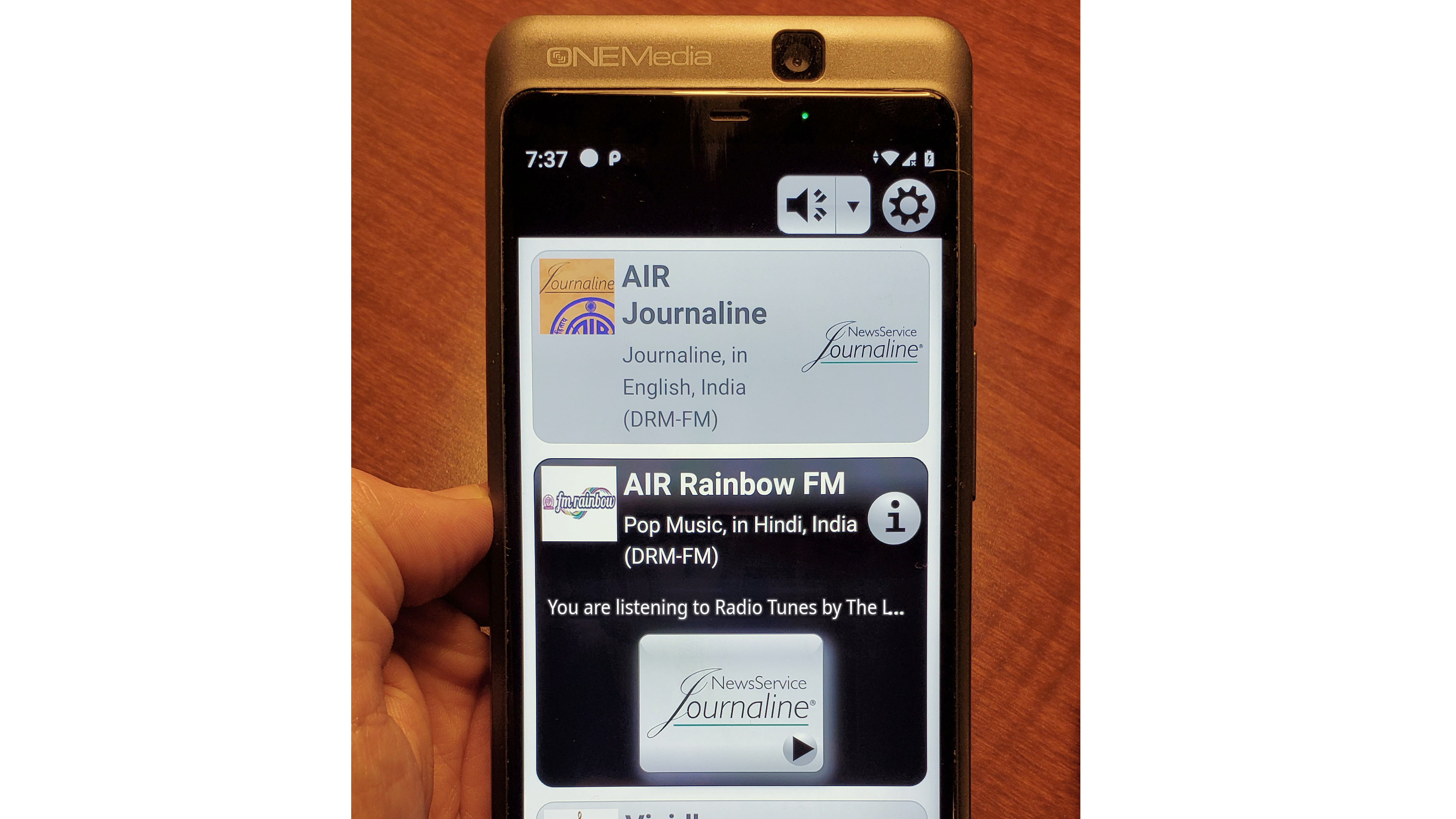Sinclair Launches ATSC 3.0 Test Site; Partners With Fraunhofer on Mondiale Service Integration
A key goal of the site is to test ATSC 3.0 reception on small devices and use of Digital Radio Mondiale

HUNT VALLEY, Md.—Mark Aitken, senior vice president of advanced technology at the Sinclair Broadcast Group, flipped the switch on a 100w transmitter to begin broadcasting ATSC 3.0 from atop the station group’s corporate headquarters here with the express purpose of testing reception on small devices like its MarkONE 3.0-enabled smartphone and, in particular, integration of Digital Radio Mondiale (DRM) in its broadcast app.
The launch comes on the same day Sinclair and German technology research institute Fraunhofer IIS jointly announced they are working together to bring audio services using the DRM standard to ATSC 3.0. (Earlier this year, Sinclair rolled out 3.0 simulcasts of its Seattle radio stations with its DRM-based broadcast app.)
“We are actually building the DRM radio service into the [3.0] broadcast app environment,” says Aitken. “That means those [DRM] services will be carried in band and transported just like HEVC [high efficiency video coding] and [Dolby] AC-4.”
While DRM relies on Fraunhofer’s xHE-ACC codec and the specified audio codec for the U.S. deployment of ATSC 3.0 is Dolby AC-4, the unsupported audio codec can be integrated into the 3.0 ecosystem via Sinclair’s ATSC 3.0 broadcast app, says Aitken.
“Even television sets through the [ATSC] A/344 interactive environment will be able to grab that app, consume the [DRM] player and bring that [xHE-AAC-based] player into the operational environment of the TV set,” says Aitken.
However, Aiken emphasizes that Sinclair’s NextGen TV programming will use the Dolby AC-4 codec. Only its audio services, such as the STIRR Radio simulcasts in Seattle, will leverage xHE-AAC coding through the DRM player in its broadcast app.
The strategy behind bringing DRM to the ATSC 3.0 ecosystem is multifaceted, says Aitken.
Get the TV Tech Newsletter
The professional video industry's #1 source for news, trends and product and tech information. Sign up below.
Uniting DRM with ATSC 3.0 offers benefits internationally. For instance, in India some 200 languages and dialects are spoken and the most prevalent means of receiving content is the mobile phone. Bringing 3.0 and DRM into harmony could offer broadcasters a way to build out a single broadcast infrastructure to deliver both TV and radio stations while offering a bandwidth-efficient way to reach radio listeners regionally in their own tongue, says Aiken.
“Bringing the rich digital radio experience of DRM to the innovative ATSC TV platform is a perfect win-win situation for users and broadcasters alike,” says Alexander Zink, senior business development manager for Broadcast Applications at Fraunhofer.
Sinclair, too, plans to leverage the bandwidth efficiency of xHE-AAC in the U.S. to deliver stereo audio services at as little as 26kb/s per channel over the air via its 3.0 broadcast app. It also is looking at how other DRM-based services might serve the public, such as Fraunhofer’s Journaline interactive information service.
One of the primary goals of the 3.0 rollout in Hunt Valley, operating under a special temporary authority (STA) license from the FCC, will focus on the use of these DRM services and other broadcast app features on small receivers, says Aitken.
Further, Aitken is hopeful that combining 3.0 and DRM in mobile devices, such as Sinclair’s Mark One smartphone, will advance the station group’s effort to get 3.0 receivers into vehicles as an affordable alternative to delivering data to cars and trucks via LTE wireless service, he says.
“Being able to demonstrate these services to the automotive world [with a Mark One-type mobile phone in a vehicle] allows them to begin to think about ATSC 3.0 for data delivery,” says Aitken. “By the end of the year, there will be upwards of 70% or more of the U.S. public served [with 3.0] by at least one broadcast facility, and the aspiration of companies like BitPath is to have multiple channels with bandwidth available over the next two to three years.”
Phil Kurz is a contributing editor to TV Tech. He has written about TV and video technology for more than 30 years and served as editor of three leading industry magazines. He earned a Bachelor of Journalism and a Master’s Degree in Journalism from the University of Missouri-Columbia School of Journalism.

